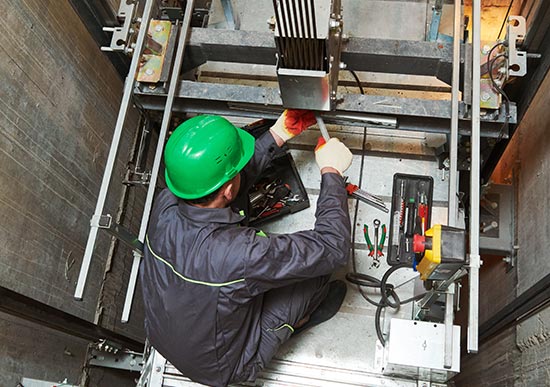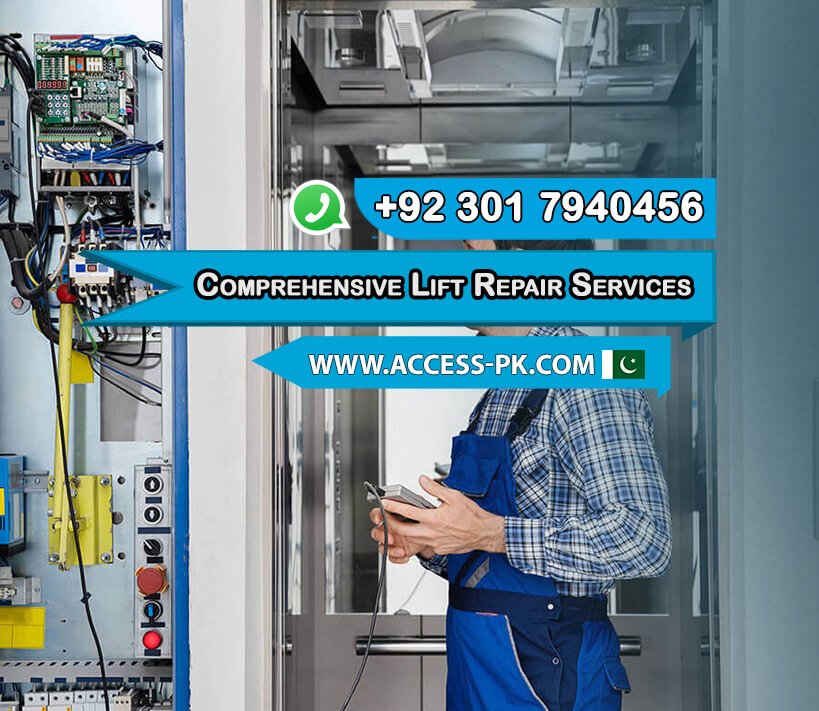Comprehending the Importance of Routine Lift Inspections and Services
In the realm of structure maintenance, guaranteeing the security and capability of elevators is a basic facet that can not be forgotten. Routine lift inspections and prompt repairs play a pivotal duty in upholding safety requirements, adhering to regulations, and guarding the well-being of passengers. Beyond simple compliance, the importance of these techniques encompasses cost-efficiency, functional dependability, and general structure administration. As we dive right into the multifaceted benefits of focusing on lift maintenances, a clearer understanding of their effect on building procedures and owner safety arises.
Security Conformity and Regulations
Following safety and security compliance regulations is vital in ensuring the correct performance and upkeep of lifts. Safety compliance guidelines are established to protect not just the individuals of the lifts but likewise upkeep workers and others who may be available in contact with the equipment. These policies detail specific standards and requirements that should be followed to minimize the threat of mishaps, injuries, and equipment malfunctions.
By sticking to safety compliance regulations, lift owners and operators show their commitment to developing a risk-free atmosphere for all people that connect with the devices. Regular examinations and upkeep checks are crucial components of maintaining conformity with these laws. These checks aid determine any kind of possible problems or threats that could endanger the safety and capability of the lifts.
Moreover, staying current with safety and security conformity regulations is vital as these requirements are regularly updated to reflect developments in innovation and finest techniques in the sector. Failing to abide by these laws can lead to penalties, penalties, and, most significantly, endangered safety for lift customers. It is important for lift owners and drivers to prioritize safety compliance and guarantee that their lifts satisfy all needed governing requirements.
Stopping Costly Failures
To make certain the longevity and performance of lift procedures, aggressive actions should be taken to avoid costly malfunctions. Normal upkeep schedules are essential in recognizing possible issues before they intensify into significant troubles. By carrying out routine evaluations, professionals can identify damaged parts, lubrication deficiencies, or irregularities in the lift's efficiency that could result in malfunctions if left unaddressed. Additionally, adhering to supplier standards for upkeep and solution periods can dramatically minimize the risk of unexpected failings.
Buying proactive upkeep not only reduces the danger of costly malfunctions but also expands the life expectancy of the lift tools. Preventative measures such as changing damaged components, addressing small repairs without delay, and ensuring proper positioning and calibration can assist in avoiding sudden malfunctions that can result in downtime and expensive repair services. By remaining in advance of prospective issues via routine evaluations and timely fixings, lift proprietors can save money in the long run and preserve undisturbed operations.
Enhancing Owner Experience

Improving Performance and Integrity

Dependability is an additional vital element in lift performance. A trusted lift system infuses self-confidence in residents, ensuring they can move in between floors securely and without interruption. Regular inspections, proactive repair work, and adherence to upkeep timetables are necessary in preserving the integrity of lift systems. Applying modern innovations like predictive maintenance can also help in identifying potential problems prior to they escalate, thus enhancing the overall reliability of the lift system.
Building Management Benefits
Enhancing effectiveness and reliability with routine lift upkeep and assessments yields considerable benefits for developing monitoring. By prioritizing lift maintenance, building managers can ensure smooth procedures, enhance occupant complete satisfaction, and lengthen the life expectancy of the lift system. Regular assessments permit for the early detection of any issues, enabling punctual repair work that can stop pricey malfunctions or downtime. This proactive method not only conserves money in the future but likewise adds to the general safety and security of the structure.
Additionally, well-kept lifts reflect favorably on the structure's picture, showcasing a dedication to safety and security and top quality solution - lift maintenance london. This can be specifically helpful for business buildings, hotels, and property complexes seeking to bring in and preserve tenants. Additionally, following maintenance regulations and standards makes sure lawful adherence, mitigating prospective obligations for the building monitoring
Conclusion
Finally, routine lift maintenances are essential for making certain safety and security conformity, stopping costly malfunctions, boosting passenger experience, enhancing performance, and integrity. Structure administration likewise takes advantage of these practices by keeping a safe and effective lift system. It is important for structure owners and managers to prioritize regular maintenance to ensure the smooth procedure of lifts and the safety of passengers.
Routine lift inspections and prompt repairs play a critical role in promoting security criteria, sticking to policies, and securing the health of passengers. It is necessary for lift owners and drivers to prioritize safety and security compliance and ensure that their lifts fulfill all necessary regulatory requirements.
By prioritizing lift upkeep, building supervisors can make certain smooth operations, boost tenant complete satisfaction, and prolong the life-span of the lift system.In conclusion, regular lift assessments and fixings are vital for making certain security conformity, protecting against pricey failures, boosting resident experience, boosting performance, and integrity. It is crucial for structure owners and recommended you read supervisors to focus on routine maintenance to ensure the smooth procedure of lifts and the security of passengers.